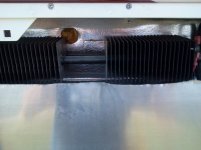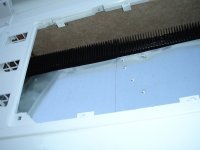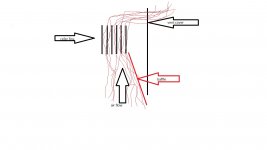rxbristol
Well-known member
I was reading the installation manual for the Norcold and it stated that the rear baffle should come right to the bottom of the cooling fins. I noted my baffle overlapped the fins by about 1 inch. 100+ degrees was causing the Norcold to go to temperatures above 40 degrees. I first installed a computer case fan (110 volt, .25 amp) to "push" air up and out. It did not make a difference. I then took tin snips and cut the baffle so it was level with the fins and removed the fan just to see what would happen...perfect, it fixed the problem. Below is a picture. The cut is not pretty, but effective.

I may get the fan running again just to see what will happen.

I may get the fan running again just to see what will happen.



